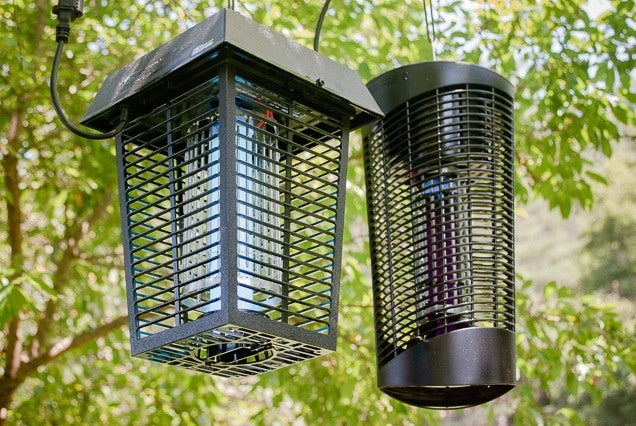For plantfluencers and plant enthusiasts, potting cactus plants teaches resilience and adaptability, thriving in arid environments and adding a touch of desert flair to any home décor. Their unique shapes, textures, and occasional blooms make them a popular choice.
In fact, according to a survey by HomeHow, the cactus is the most Instagrammable houseplant by far, with an extraordinary 23 million posts dedicated to the spiny plant. Yet, the prospect of potting and cultivating these spiky specimens can be daunting for novice growers
In this comprehensive guide, will unveil the secrets of cactus cultivation, equipping you with the knowledge and techniques to transform your home into a thriving cactus haven.
Table of contents
- What is a Cactus Plant?
- Choosing the Right Cactus Species for Indoor Growth
- What are the Basic Tips for Potting Cactus Plants?
- What are the Planting Techniques for Optimal Cacti Growth?
- What are Tips for Optimizing Cactus Growth and Health?
- How Do I Identify and Address Cactus Problems?
- What are the Tips for Overwintering Cacti?
- FAQs
- Conclusion
- References
- Recommendations
What is a Cactus Plant?
Cacti are succulent plants that are native to semi-arid regions of the Americas. They are characterized by their thick, fleshy stems that store water, allowing them to survive in dry conditions. Cacti come in a wide variety of shapes and sizes, and they can be found in a variety of colors. Some common cactus species include saguaros, prickly pears, barrel cacti, and hedgehog cacti.
Cacti are relatively easy to care for, and they can be a beautiful addition to any home. However, it is important to provide them with the right care to ensure their health and survival.
Read also: How Can I Get A Horticulture Associate Degree Online? Schools, Programs, Cost
Choosing the Right Cactus Species for Indoor Growth
Selecting the appropriate cactus species for indoor cultivation is crucial for ensuring their survival and thriving within the confines of a home environment. Each cactus species has unique characteristics, adaptability, and light requirements that must be considered to achieve success in indoor cactus cultivation. Here’s a guide to choosing the right cactus species for indoor growth:
1. Consider Indoor Conditions

Before selecting a cactus species, assess the indoor environment where the plant will reside. Factors to consider include:
- Natural Sunlight: Determine the amount of natural sunlight available in the chosen location. Some cacti require ample direct sunlight, while others can tolerate lower light conditions.
- Humidity Levels: Assess the humidity levels of your home. Cacti generally prefer drier environments, so choose species that are adapted to low humidity.
- Temperature Range: Consider the temperature fluctuations in your home. Cacti typically thrive in warmer temperatures, so avoid species that are sensitive to cold drafts or sudden temperature changes.
2. Opt for Easy-to-Care Varieties:
For beginners, it’s advisable to start with easy-to-care cactus species that are tolerant of less-than-ideal indoor conditions. These include:
- Echinocactus grusonii (Golden Barrel Cactus): This popular cactus is known for its golden spines and adaptability to indoor environments.
- Mammillaria hahniana (Old Lady Cactus): This low-maintenance cactus features white spines and a crown of pink flowers in the spring.
- Aporocactus flagelliformis (Rat Tail Cactus): This unique cactus has long, trailing stems with vibrant magenta blooms.
3. Match Cactus Size to Available Space:
Choose a cactus species that is suitable for the available space. Consider the size of the pot and the potential growth of the cactus over time.
- Small Spaces: For limited spaces, opt for compact cacti like Mammillaria or Gymnocalycium species.
- Larger Spaces: If you have ample space, consider larger cacti like Echinocactus or Cleistocactus species.
4. Select Cacti with Aesthetic Appeal

Choose a cactus species that appeals to your personal taste and complements your home décor. Consider factors like shape, color, and texture.
- Unique Shapes: Opt for cacti with unusual shapes, such as the ribbed Echinocactus or the globe-shaped Gymnocalycium.
- Vivid Colors: Consider cacti with vibrant colors, such as the yellow-spined Echinocactus or the purple-hued Astrophytum.
- Textural Interest: Select cacti with interesting textures, such as the woolly spines of Mammillaria or the ribbed stems of Rebutia.
5. Consult Reliable Sources:
Before making a final decision, consult reputable sources, such as online plant databases or local nurseries, to gather detailed information on the specific care requirements of each cactus species.
Also, read this: How Does Electric Toasters Work | Best Working Conditions
What are the Basic Tips for Potting Cactus Plants?
Here are some basic tips for caring for cactus plants:
Select the Right Pot

The foundation of a healthy cactus lies in choosing the appropriate pot. While the iconic terracotta pots are a popular choice, their porous nature can lead to rapid water evaporation, making them less suitable for water-wise cacti. Instead, opt for glazed ceramic or plastic pots that retain moisture more effectively. The pot’s size should match the cactus’s root ball, providing ample space for growth without overcrowding.
Prepare the Perfect Cactus Mix
Cacti thrive in well-draining soil that mimics their native desert environment. A standard cactus mix typically consists of equal parts potting soil, coarse sand, and perlite. The sand and perlite enhance drainage, preventing waterlogging and root rot, while the potting soil provides essential nutrients. For added drainage, consider adding a layer of gravel or broken pottery shards to the bottom of the pot.
Provide Ample Sunlight:
Cacti thrive in sunny locations, requiring at least 6 hours of direct sunlight per day. Place them in a south-facing window or consider using supplemental lighting if natural light is limited.
Water Sparingly but Deeply

Cacti are adapted to arid environments and don’t require frequent watering. Allow the soil to dry completely between waterings to prevent root rot. When watering, soak the soil thoroughly until water drains from the pot’s drainage holes.
Fertilize During the Growing Season:
During the spring and summer months, fertilize your cactus monthly using a diluted solution of balanced cactus fertilizer. Avoid overfertilizing, as this can harm the plant.
Monitor for Pests and Diseases:
Inspect your cactus regularly for signs of pests, such as mealybugs or scale insects. If pests are detected, isolate the affected plant and treat it with an insecticidal soap or horticultural oil. Additionally, be mindful of signs of overwatering, such as soft or mushy stems, which can indicate root rot.
Overwinter Care:
During the colder months, when cacti enter a dormant state, reduce watering and provide them with a cooler environment. Avoid exposing them to frost or temperatures below 50°F (10°C).
What are the Planting Techniques for Optimal Cacti Growth?
Here’s a comprehensive guide to planting techniques for optimal cacti growth:
Gentle Handling and Root Preparation
- Handle with Care: Use gloves to protect your hands from spines. Avoid grasping the cactus by its body, as this can damage its delicate structure.
- Root Loosening: Gently loosen the roots of the cactus from its nursery pot. If the roots are tightly bound, carefully tease them apart to encourage healthy growth in the new pot.
Proper Planting Depth
- Position the cactus: Place the cactus in the pot so that the base of the plant sits just above the soil level. This allows for proper air circulation around the base of the cactus and prevents waterlogging.
Backfilling and Watering
- Backfill and Firm: Fill the pot with the prepared cactus mix, ensuring that the roots are firmly anchored. Gently pat down the soil to secure the cactus in place.
- Initial Watering: Water the newly potted cactus thoroughly, allowing excess water to drain freely. Overwatering can lead to root rot, so ensure the soil is completely dry before watering again.
What are Tips for Optimizing Cactus Growth and Health?
Cultivating healthy and thriving cacti requires a combination of proper potting techniques, optimal growing conditions, and ongoing care. Here’s a comprehensive guide to optimizing cactus growth and health:
Fertilize During the Growing Season:
During the spring and summer months, when cacti are actively growing, fertilize your cactus monthly using a diluted solution of balanced cactus fertilizer. Avoid overfertilizing, as this can harm the plant and cause nutrient burn.
Monitor for Pests and Diseases:
Regularly inspect your cactus for signs of pests, such as mealybugs, scale insects, or spider mites. If pests are detected, isolate the affected plant and treat it with an appropriate insecticidal soap or horticultural oil. Additionally, be mindful of signs of overwatering, such as soft or mushy stems, which can indicate root rot.
Repot When Necessary

Repot your cactus every two to three years, or when it outgrows its current pot. Choose a pot one size larger and follow the recommended potting techniques to ensure optimal growth and prevent root damage.
Provide Overwinter Care:
During the colder months, when cacti enter a dormant state, reduce watering and provide them with a cooler environment. Avoid exposing them to frost or temperatures below 50°F (10°C).
Outdoor Landscaping:
If you plan to use cacti in outdoor landscaping, select species that are well-suited to your climate and provide them with the necessary conditions, including adequate sunlight, drainage, and protection from harsh weather conditions.
Observe and Adapt:
Pay attention to your cactus’s growth patterns and respond accordingly. Adjust the watering frequency based on the season and the cactus’s specific needs. Monitor for signs of stress or decline and take corrective actions as necessary.
How Do I Identify and Address Cactus Problems?
Identifying and addressing common cactus problems promptly is essential for ensuring the health and longevity of these resilient plants. Cacti, while generally low-maintenance, can experience various issues that can hinder their growth and vitality. Recognizing the signs of these problems and implementing appropriate solutions is crucial for maintaining the well-being of your cactus collection.
1. Overwatering:
Overwatering is one of the most common causes of cactus decline. Symptoms of overwatering include:
- Soft, mushy stems
- Discolored stems (yellow, brown, or black)
- Root rot (foul odor, wilting)
To address overwatering:
- Reduce watering frequency, allowing the soil to dry completely between waterings.
- Increase drainage by ensuring the pot has drainage holes and using well-draining cactus mix.
- Consider repotting the cactus into a dry pot with fresh cactus mix if root rot is suspected.
2. Pests and Diseases:
Cacti, like other plants, are susceptible to pests and diseases. Common pests include:
- Mealybugs: White, cottony masses on stems and in crevices
- Scale insects: Armoured bumps on stems and leaves
- Spider mites: Fine webbing on stems and leaves
To control pests:
- Isolate the affected cactus to prevent spread.
- Use an insecticidal soap or horticultural oil to treat the plant.
- Remove visible pests with a cotton swab dipped in rubbing alcohol.
Common diseases include:
- Fungal diseases: Waterlogged conditions can lead to fungal infections, causing stem lesions and discoloration.
- Bacterial diseases: Soft rot, characterized by mushy, discolored stems, can be caused by bacterial infections.
To manage diseases:
- Improve drainage to prevent waterlogging.
- Avoid overhead watering, which can increase humidity and promote fungal growth.
- Discard heavily infected plants to prevent further spread.
3. Insufficient Sunlight:
Cacti require adequate sunlight for optimal growth. Symptoms of insufficient sunlight include:
- Stretching or etiolation (elongated, pale growth)
- Loss of spines or vibrant coloration
- Slow or stunted growth
To provide adequate sunlight:
- Place the cactus in a south-facing window or an area that receives at least 6 hours of direct sunlight per day.
- Supplement natural light with grow lights if necessary.
- Gradually acclimate the cactus to increased sunlight exposure to avoid sunburn.
4. Rootboundness:
Rootboundness occurs when the cactus’s root system outgrows its current pot, restricting growth and nutrient uptake. Symptoms of rootboundness include:
- Roots visible through drainage holes or lifting the pot from the soil
- Slow or stunted growth
- Wilting despite regular watering
To address rootboundness:
- Repot the cactus into a pot one size larger every two to three years or when signs of rootboundness appear.
- Gently loosen the roots before repotting to promote healthy root growth in the new pot.
- Use well-draining cactus mix and ensure the new pot has drainage holes.
5. Nutritional Deficiencies:
While cacti have low fertilizer requirements, they can still experience nutritional deficiencies. Symptoms of nutrient deficiencies include:
- Pale or yellow coloration
- Slow or stunted growth
- Poor flowering
To address nutritional deficiencies:
- Use a balanced cactus fertilizer diluted to half strength during the growing season (spring and summer).
- Avoid overfertilizing, as this can harm the plant.
- Fertilize more frequently for young, actively growing cacti.
Related Post: How to Clean a Swimming Pool: Quick Maintenance Guide
What are the Tips for Overwintering Cacti?
As the cooler months approach and temperatures begin to dip, cacti, native to arid regions, enter a dormant state to conserve energy and survive the winter. Proper overwintering care is crucial for ensuring the successful year-round growth of your cactus collection and preventing damage or decline during this period of dormancy.
1. Reduce Watering:
Cacti’s water needs diminish significantly during their dormant phase. Overwatering during this time can lead to root rot and other issues. Allow the soil to dry completely between waterings, and reduce the overall frequency of watering.
2. Provide Cool, Dry Conditions:
Transfer your cacti to a cooler location, ideally with temperatures ranging from 45°F to 55°F (7°C to 13°C). Avoid exposing them to frost or temperatures below 50°F (10°C). Ensure the location is dry and has low humidity levels.
3. Minimize Light Exposure:
Cacti’s light requirements decrease during dormancy. Reduce the amount of direct sunlight your cacti receive, and consider moving them to a location with indirect light.
4. Stop Fertilizing:
Cacti do not require fertilizer during their dormant period. Avoid fertilizing during the winter months, as this can stress the plant and hinder its recovery in the spring.
6. Protect from Frost and Cold Drafts:
Avoid exposing your cacti to frost or cold drafts, as these can cause significant damage. If temperatures drop below freezing, consider bringing your cacti indoors or placing them in a sheltered location.
7. Gradual Transition Back to Active Growth:
As spring approaches and temperatures begin to rise, gradually increase watering and light exposure to prepare your cacti for renewed growth. Avoid sudden changes in conditions, as this can shock the plants.
FAQs
A healthy cactus will exhibit firm, plump stems, bright colors, and occasional blooms. Avoid signs of rot, such as soft or mushy stems, or pests, such as mealybugs or scale insects.
Water your cactus deeply, allowing excess water to drain freely. Avoid getting water on the cactus body, as this can lead to rot. Use a watering can with a long spout to reach the base of the plant.
Fertilize your cactus monthly during the growing season using a diluted solution of balanced cactus fertilizer. Avoid overfertilizing, as this can harm the plant.
If you notice pests on your cactus, isolate it from other plants and treat it with an insecticidal soap or horticultural oil. Follow the instructions on the product label carefully.
Ensure your cactus is receiving adequate sunlight, water, and drainage. Check for signs of pests or root rot. Adjust your care routine accordingly.
Conclusion
Cacti, with their diverse forms and enduring nature, make a remarkable addition to any home. By understanding their unique needs and implementing the best potting and care practices, you can cultivate a thriving cactus collection that adds a touch of desert elegance to your living space. Embrace the challenge of nurturing these resilient plants and discover the satisfaction of watching them flourish under your care.
References
- thespruce.com – How to Safely Transplant a Cactus
- gardenersworld.com – How to repot a cactus





